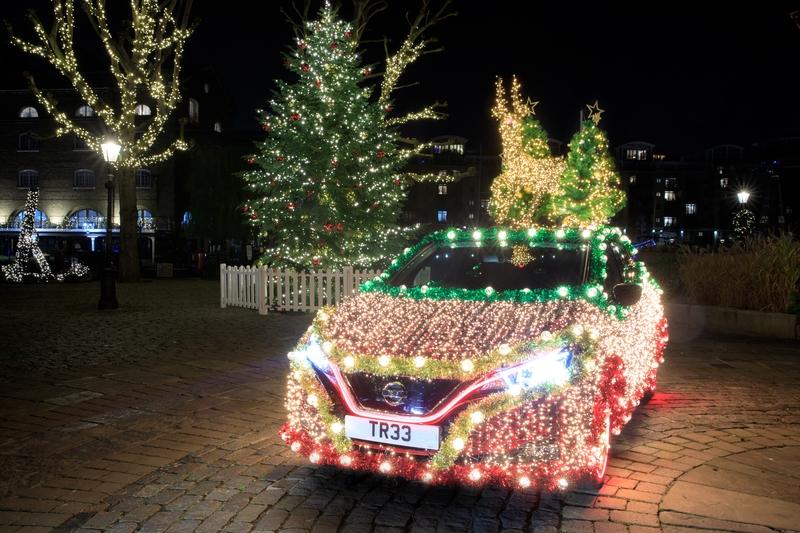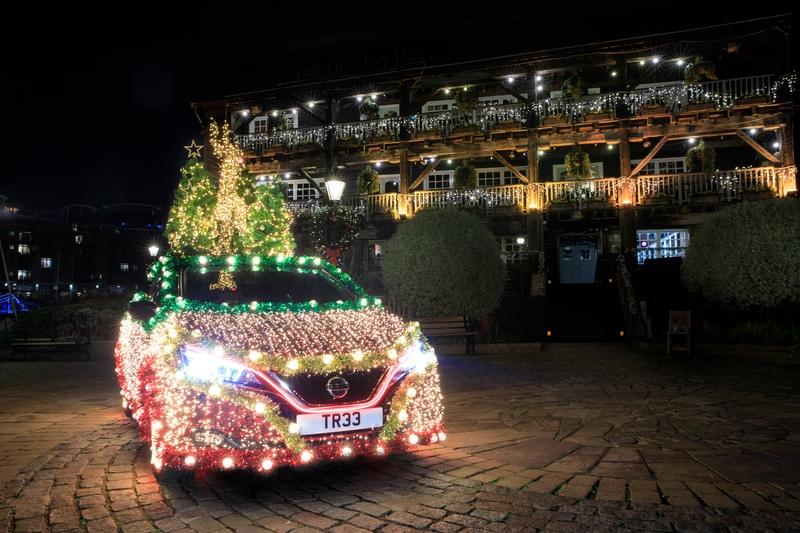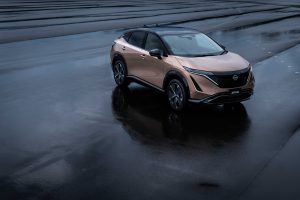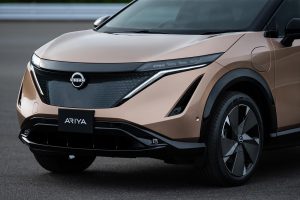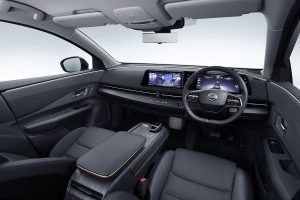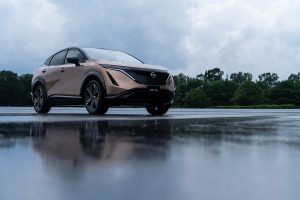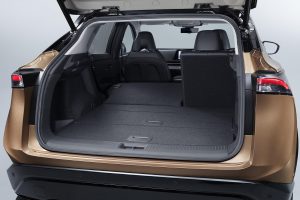Nissan’s bringing the yuletide cheers to all of us
After spending an entire year producing cars, building future plans, and spending millions of dollars in research and development, automakers typically take a step back during the holiday season, either to unwind, reflect on the year that’s about to end, or, at least in Nissan’s case, turn a Nissan Leaf into a fully lit Christmas tree.
This, ladies and gentlemen, is the Nissan Tree.
I don’t know what I’m more impressed with. That Nissan was able to cover the entirety of the Leaf’s body with Christmas lights or that it managed to find a way to use the Leaf’s own regenerated energy to actually power all these lights. Mind you, we’re not just talking about a strand of lights with this setup. Nissan used over 15,000 lights on light up the Nissan Tree. It also used 190 meters of utensil and enough Christmas balls to fill a ball pit.
The e-Pedal system is doing the work
All the lighted bits on the Nissan Tree, from the snowflakes on the wheels to Rudolph the red-nosed reindeer on the roof, are powered by the Leaf’s e-Pedal system and B mode functions.
For those unfamiliar with these features, the e-Pedal is a single pedal function found in the Leaf that can be used to accelerate and brake the electric car. Engaging the e-Pedal allows you to slow the car down when you lift your foot off the accelerator so much so that the Leaf can stop by itself. While the feature itself doesn’t accelerate the car when activated, it does stiffen the real accelerator pedal and you’ll feel that immediately.
Beyond this, the e-Pedal is also the same function that helps the Leaf harvest energy via regenerative braking.
Nissan accomplishes this by recycling the energy from the Leaf’s movement during deceleration or braking. The regenerated energy then goes straight back to the batteries where it is used to recharge the cells that eventually provide the energy for the Nissan Leaf to light up like a rolling Christmas tree.
Nothing but a day’s work for the Nissan Leaf
It’s hard to power over 15,000 Christmas lights in one go.
It’s even more difficult when you consider that you’re using regenerated energy to actually power all these lights. But the Nissan Leaf is a special kind of electric car.
You can point to its 40-kWh battery pack that comes with an EPA-rated range of 151 miles. You can point to its electric motor, which produces 147 horsepower and 236 pound-feet of torque. Or you can point to all the technical bits and systems it carries with it, including the aforementioned e-Pedal system and the B-mode driving function that also helps regenerate energy under braking using the more traditional brake pedal.
You can point to any of these as factors in the Leaf’s ability to regenerate as much as 744 kWh of clean energy if the car is driven 11,000 miles each year.
| Battery | |
|---|---|
| Type | Li-ion battery |
| Capacity | 40kWh |
| Electric motor | |
| Name | EM57 |
| Maximum output | 147 HP @ 3,283 9,795 RPM |
| Maximum torque | 236 LB-FT @ 0 3,283 RPM |
| Performance | |
| Cruising range | 150 miles |
| Charging time (normal charging) | 16 hours (3kW) 8 hours (6kW) |
| Charging time from alert to 80% (Quick Charging) | 40 minutes |
| Curb weight | 3,433 – 3,508 Lbs |
| Gross vehicle weight | 4,453 Lbs |
For some perspective, that amount of energy is equivalent to energy savings of 20 percent on domestic electricity consumption of an average household. For even more perspective, the amount of regenerated energy can power all these things:
- 266 Christmas trees with 700 incandescent lights for a full hour of joy
- 297 ovens for one hour to cook your Christmas dinner
- 744 televisions for five hours to watch your favorite Christmas movies
- 10,783 houses with 1,000 LED lights for five hours
Compared to what the Nissan Leaf’s regenerated energy technology is fully capable of, powering over 15,000 Christmas lights covering the Leaf doesn’t sound like hard work for Nissan’s venerable electric hatchback.


